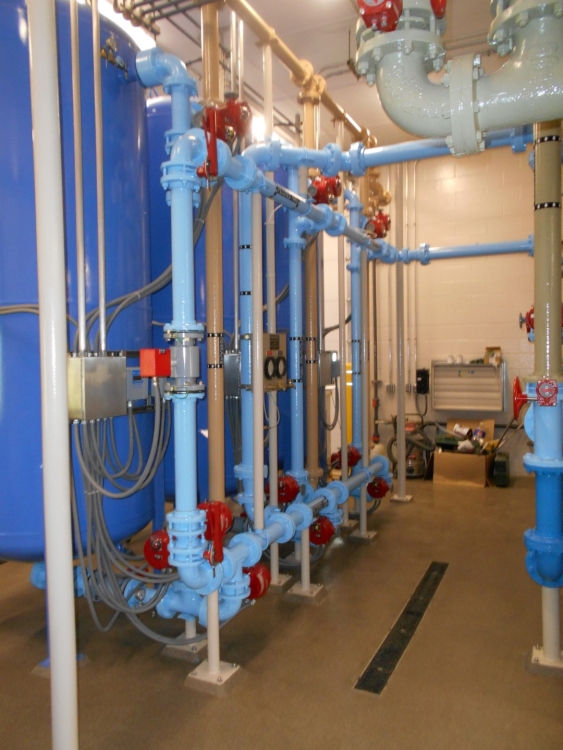Radium in drinking water — health risks and treatment methods
As a radioactive element, radium is present in varying amounts in rocks and soil within the Earth's crust. While surface water is usually low in radium, groundwater can contain high levels of radium, potentially leading to radium in drinking water. Radium is typically found in drinking water in regions where it is present in the granite bedrock surrounding aquifers from which water supplies are drawn.
Radium isotopes in groundwater can sometimes exceed health-based regulatory standards and may pose a health hazard. While it is assumed that any radiation exposure carries a certain degree of risk, the U.S. Environmental Protection Agency (EPA) has established a maximum contaminant level (MCL) of radium in public water supplies of 5 picoCuries per liter (pCi/L).
In areas such as northern Illinois, high radium levels have been detected in water from deep aquifers (more than 500 feet) used for public supply. Radium has also been found in some private and public wells. As radium can not be seen, tasted or smelled in drinking water, it is critical for public water suppliers to test for radium to avert potential health risks.
Why radium in drinking water is a health hazard
How does radium in drinking water affect human health? Though only a small amount of radium is absorbed in the body, it can still be harmful. Radium behaves similarly to calcium and is deposited in tissues, especially bones. Radium in water used for washing or showering does not pose health risks, as alpha particles emitted by radium isotopes do not travel through skin.
Once internally deposited, emitted alpha particles may damage surrounding tissues over time. Exposure to high levels of radium is associated with:
- Anemia.
- Cataracts.
- Fractured teeth.
- A compromised immune system.
- An increased risk of bone, liver and breast cancer.
The MCL for radium in drinking water is set well below the levels for which such health effects have been observed. However, federal regulations require public water systems to notify the public if radium levels in drinking water exceed 5 pCi/L. Public water systems should also implement ways to limit radium levels in drinking water.
Removing radium from drinking water
Several treatment methods are used to remove radium from drinking water, including ion exchange, Hydrous Manganese Oxide (HMO) injection, lime softening and reverse osmosis. Ion exchange and HMO injection are two commonly used approaches in northern Illinois and can remove up to 90%of radium in drinking water and are commonly implemented by public water suppliers.
Under the EPA's Radionucleotide Rule, the running average of quarterly drinking water samples for one year of any entry point to the distribution system (EPTDS) should not exceed the MCL for radium. If it does, it is considered a violation, and the facility running the water system may be fined or penalized.
Partner with water engineers to ensure radium-free drinking water
At Fehr Graham, we are an experienced team of water engineers committed to helping communities access safe and reliable drinking water. Some of our past projects include developing water system improvement plans in Shannon and Rockford, Illinois, and reducing radium concentrations in the water to acceptable state standards. Whether it is upgrading aging water mains, replacing lead service lines, overseeing construction or securing funding, we help municipal leaders build robust water infrastructure for their communities.
To learn more about how Fehr Graham can help address radium in drinking water and ensure safe water for your community, contact us or call 815.394.4700.
 |
Seth Gronewold is a Professional Engineer who manages several municipal and private projects. As one of the firm’s owners, he works to improve the quality of life for those in northern Illinois by evaluating issues, listening to needs and being responsive to clients. Contact him at |
Collaborative, Insightful, Results-Driven Solutions
Fehr Graham provides innovative engineering and environmental solutions to help improve the lives and communities of our customers.

